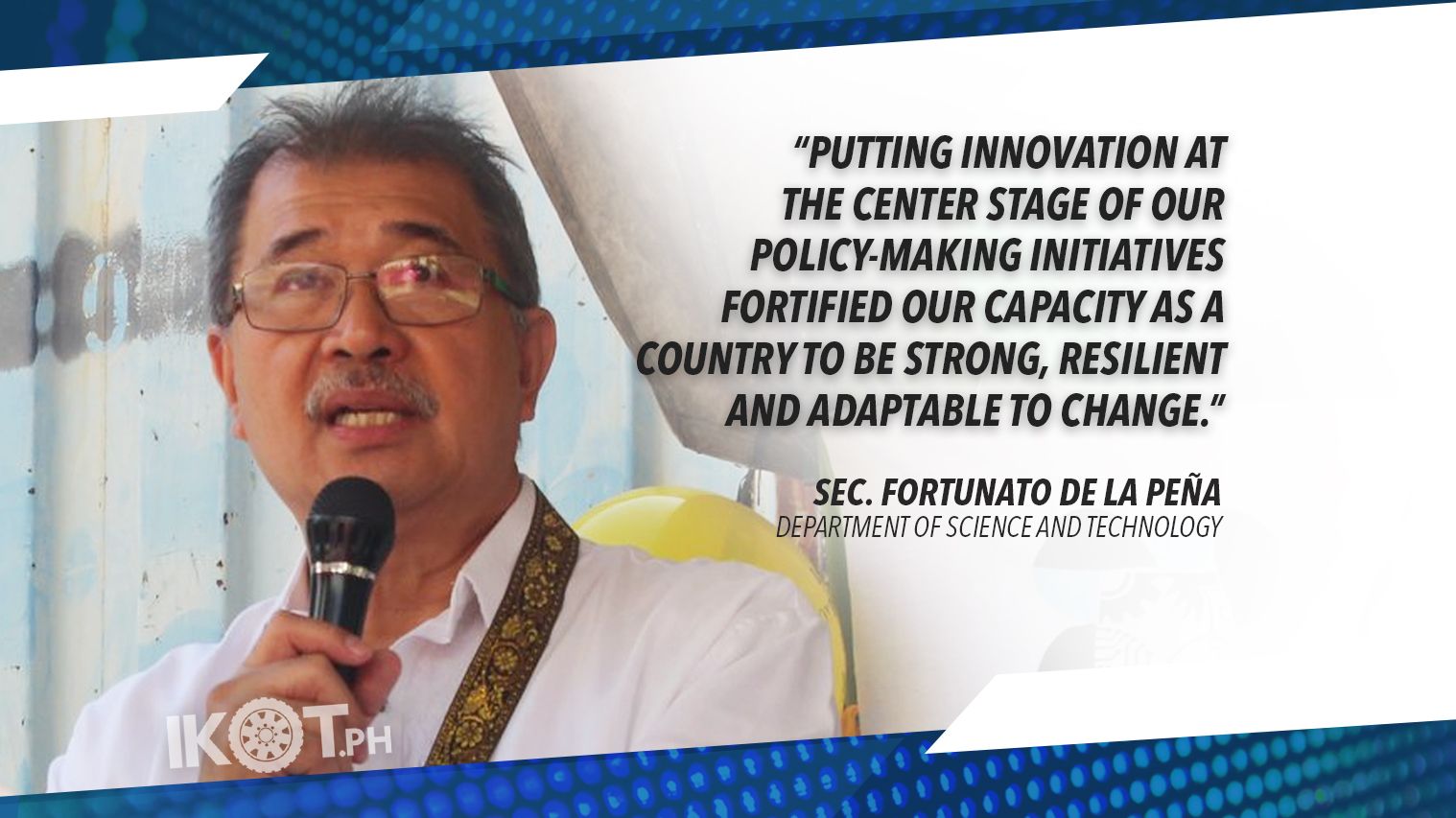The Philippines has moved four places up in the 2020 Global Innovation Index (GII), among the 131 economies in the world. The country improved from its 54th place last year. Among the 29 economies that belong to the lower middle-income countries, the Philippines managed to reach the 4th place and ranks 11th among the 17 economies in South East Asia, East Asia, and Oceania. The Philippines performed well along with the innovation achievers like China, Vietnam and India in the overall GII innovation ranking over the given period.
The country’s latest performance in the GII is a testament to its continuous commitment to innovation since 2014 when it ranked 100th place.The Philippines moved up by 50 notches in just 6 years.
“Even with COVID-19, we have shown that innovation through R&D is the key to survival and success in the new environment,”
“The strategy of putting innovation at the center stage of our policy-making initiatives fortified our capacity as a country to be strong, resilient and adaptable to change. Even with the problems brought by COVID-19, we have shown that innovation through R&D is the key to survival and success in the new environment,” saidDOST Secretary Fortunato T. de la Peña, one of the authors featured in the GII 2020.
The GII is jointly developed by Cornell University, INSEAD, and the World Intellectual Property Organization (WIPO), a specialized agency of the United Nations. This year, the 13th edition of the GII is themed: “Who Will Finance Innovation?”
The GII has two sub-indices: Innovation Input and Innovation Output. The Philippine ranking in Innovation Input rose to 70 in 2020, from 76 in 2019 and 86 in 2018. This can be attributed to the increasing investment of the government in Research and Development (R&D). The country also improved in Innovation Output scoring at 41 this year compared to 42 and 68 in 2019 and 2018 respectively. The boost can be attributed to the capacity build-up of Science and Technology (S&T) human resource, establishment of innovation facilities such as research centers, advanced laboratories, and networking thereof.
A look at the Global Innovation Index shows the sustained growth of the innovation level of the country. For 2020, the Philippines scored above average in almost all innovation dimensions, a result of various DOST contributions to Inclusive Innovation from Filipinnovation since 2007 where the whole-of-government approach (WOGA) to inclusive innovation was jointly decided by DOST, Department of Trade and Industry, the National Economic Development Authority (NEDA), together with representatives from the academe, industry and civil society organizations. To further support national development and sustainable economic growth, WOGA is again applied in creating the Philippine Innovation Act in 2019.
The Philippine ranking stands out even against the achievements of high-income economies for the innovativeness of its business sector and investments. The country reached high ranks in Knowledge Absorption at 7th in the world with top marks in high tech imports and research talents.
Since 2007, the DOST-Science Education Institute (SEI) has been implementing two graduate scholarship programs for science and engineering called the Accelerated Science and Technology Human Resource Development Program (ASTHRDP) and the Engineering Research and Development for Technology (ERDT). Starting from just 17 graduates in 2008, DOST-SEI has produced 400 to 500 MS and PhD graduates per year in the last four years. The Balik Scientist Program or BSP is another program that highly contributed to the country’s innovation. This program facilitates Filipino experts working abroad to return to the Philippines and share their expertise with students, teachers and local industry players.
The result of these efforts is evidenced on the country’s innovation profile showing top 25 rankings for indicators such as Graduates in science and engineering, Market capitalization, Research talent in business enterprises and High-technology manufacturing.
“With the high marks achieved by our country in the latest GII, R&D provides us the opportunity to change and mold the shape of our country’s recovery from the pandemic.”
The DOST-Science for Change Program (S4CP) took the lead in government programs in funding innovation efforts through massive increase in investments in Science and Technology (S&T) Human Resource and Development (HRD) and Research and Development (R&D) projects. The S4CP sub-program created to accelerate STI in the country to keep up with global developments is known as the Niche Centers in the Regions for R&D Program (NICER) which provides grants to academic institutions in the regions to catalyze and promote regional economic development. As of August 2020, DOST has established 23 NICERs in 16 regions for a total funding of P852 million. The Centers cover the priority areas/commodity/product in Agriculture, Aquatic and Marine, Environment, Industry, Energy, Emerging Technology and Health.
Under the Business Sophistication Pillar, the Philippines also made a significant score in university and industry research collaborations. This can be attributed to another S4C Program dubbed as Collaborative Research and Development to Leverage Philippine Economy (CRADLE). The sub-program encourages academe-industry collaborations to conduct research. To date, the program has forged 49 partnerships with P222 million total grants awarded to 32 academe and 50 industry partners. As a continuing initiative, DOST is advocating for the passage of the S4CP Bill in both Houses of Congress. This bill is geared towards further accelerating STI in the country and create a massive increase in investment on S&T Human Resource Development and R&D.
“R&D programs such as Science for Change provides an enabling platform where government, academic, and industry players in the country collectively pursue market-oriented research that directly addresses the needs of specific sectors,” says DOST- Undersecretary for R&D Rowena Cristina L. Guevara. “With the high marks achieved by our country in the latest GII, R&D provides us the opportunity to change and mold the shape of our country’s recovery from the pandemic.”

